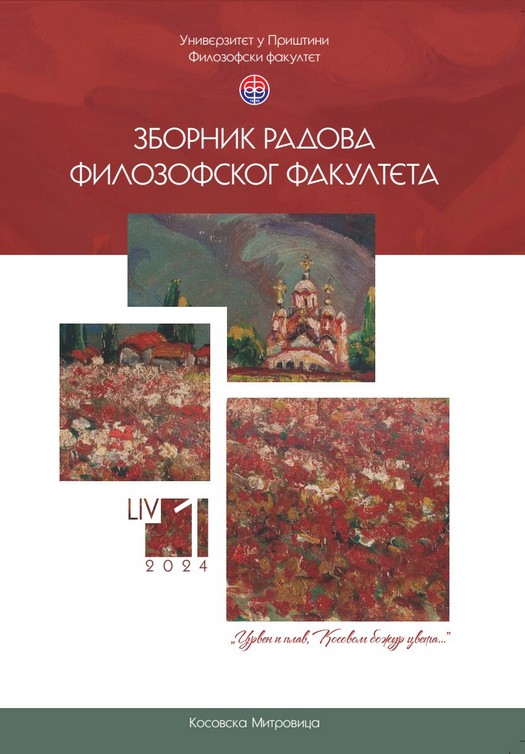The Impact of Stereotypes on Intercultural Communication
Abstract
Broadly speaking, stereotyping is a cognitive mechanism that underlies all aspects of intercultural processes—the way individuals perceive members of other groups shapes their attitudes and behavior towards them and influence different types of intercultural interactions and worldviews.
Based on the assumption that positive stereotypes about people who come from other cultures are used in human communication as an expression of each person’s need to simplify all impressions and representations in order to understand the world and the people around them, positive stereotypes can facilitate communication. On the other hand, negative stereotypes in intercultural communication can lead to complete misunderstandings because it is assumed that all people within a certain group have the same characteristics.
Therefore, both positive and negative stereotypes in intercultural communication can result in unfounded generalisations, false evaluations and oversimplifications, thus forming the basis for unfair behavior and labelling towards those to whom they refer, in addition to discrimination and interpersonal conflicts.
In the search for a model for successful intercultural communication, the principle that culturally specific information should not be applied to all members of a cultural group and that the uniqueness of each member of the group must be respected can be considered extremely important. Stereotypical classifications should not be resistant to change as they relate to relationships between people, which are highly susceptible to change. Successful intercultural communicators should be able to form an opinion
based on their communication experience and independent observations, free from stereotypes that they may have consciously or unconsciously gained.
Also, viewing the world from the prism of others, not only from our own egocentric and ethnocentric position, and not allowing stereotypes to act as “filters”, which allow in only what is similar to our cultural behavior, are important in preventing the adverse effects of stereotypes on communication.
Therefore, a recommendable model of successful and efficient intercultural communication is unburdened by bias and stereotypes towards the members of cultural groups different from our own.
References
Бакић Мирић, Н., Јанковић, А. и Стојковић, Н. (2022). Популарна култура и интеркултурална комуникација: глас и ехо. Зборник радова Филозофског факултета у Приштини, 52 (2), 13–28. https://doi.org/10.5937/zrffp52-33920
Bakić-Mirić, N. (2020). Introducing Translation as Intercultural Communication. Kosovska Mitrovica: Filozofski fakultet.
Bosnić Đurić, A., Đurić, M. i Tomašević, T. (2021). Isto i različito. Beograd: Evropski pokret u Srbiji. https://forca.rs/wp-content/uploads/2021/03/ISTO-I-RAZLICITOKratki-vodic-kroz-interkulturalno-obazovanje_FINAL1.pdf
Bugarski, R. (2005). Jezik i kultura. Beograd: Biblioteka XX vek.
De Sosir, F. (1969). Opšta lingvistika. Beograd: Nolit.
Đerić, G. (2004). Prvo lice množine. Beograd: Institut za filozofiju i društvenu teoriju.
Eko, U. (1973). Kultura, informacija, komunikacija. Beograd: Nolit.
Fiske, S. T., Cuddy, A. J. C., Glick, P., & Xu, J. (2002). A model of stereotype content: Competence and warmth respectively follow from perceived status and competition. Journal of Personality and Social Psychology. https://doi.org/10.1037/0022-3514.82.6.878
Gerbner, G., Gross, L., Morgan, M., & Signorelli, N. (1980). The “mainstreaming” of America: Violence profil No. 11. Journal of Communication, 30(3), 10–29. https://doi.org/10.1111/j.1460-2466.1980.tb01987.x
Kadarisman, A. E. (2015). Linguistic relativity, cultural relativity, and foreign language teachnig. TEFLIN Journal. https://doi.org/10.15639/teflinjournal.v16i1/1-25
Lüsebrink, H. J. (2008). Interkulturelle Kommunikation. Interaktion, Fremdwahrnehmung, Kulturtransfer. 2., Aktualisierte und Erweiterte Auflage. Stutgart –Weimar: Verlag J. B. Metzler. https://www.academia.edu/68060880/L%C3%BCsebrink_Hans_J%C3%BCrgen_Interkulturelle_Kommunikation_Interaktion_Fremdwahrnehmung_Kulturtransfer
Martin, J. N., & Nakayama, T. K. (2018). Intercultural Communication in Context. New York: McGraw Hill Education.
Milenković, V. (2016). Teorijsko određenje Ekovog kulturno znakovno komunikacionog modela: komparativna kontekstualizacija sa modelima De Sosira, Barta, Jakobsona i Hola. International Journal of Scholarly Papers for Media and Society Research, 9(3), 79–90. https://www.mediadialogues.com/Archive/MD%20Vol.%209,%20No.%203/079
Neuliep, J. W. (2018). Intercultural Communication: A Contextual Approach. Thousand Oaks, CA: SAGE.
Samovar, L. A., Porter, R. E., McDaniel, E. R., & Roy, C. S. (2017). Communication Between Cultures. Boston: Cengage Learning.
Spencer-Rodgers, J., & McGovern, T. (2002). Attitudes toward the culturally different: The role of intercultural communication barriers, affective responses, consensual stereotypes, and perceived threat. International Journal of Intercultural Relations, 26, 609–631. https://doi.org/10.1016/S0147-1767(02)00038-X
Suryandari, N. (2020). Role of stereotyping in intercultural communication. Journal of Humanities and Social Science, 25(1–3), 24–30. https://doi.org/10.9790/0837-2501032430
The details about the publication policy, including copyright and licensing, are available at:

